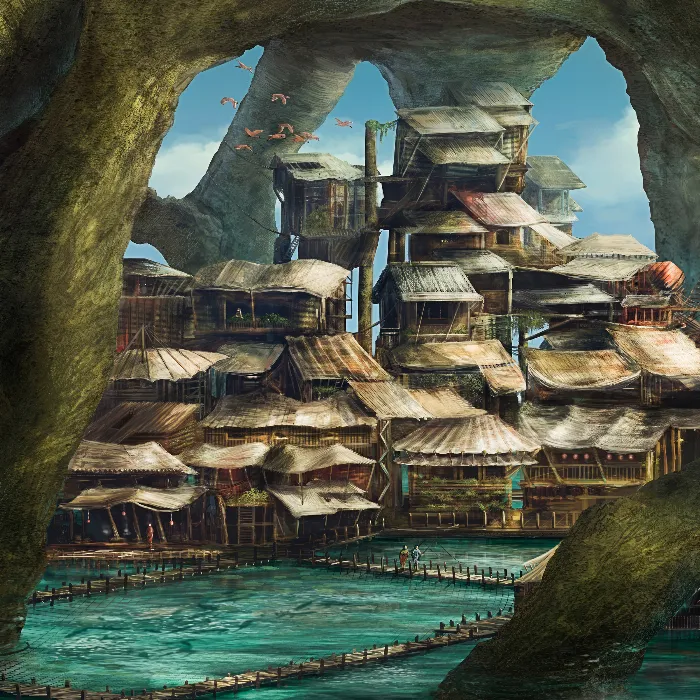Creating an engaging digital illustration requires not only creative skills but also a deep understanding of composition. Thoughtful design directs the viewer's attention purposefully and conveys the narrative of the image. This guide will help you grasp and apply the fundamentals of composition for digital and matte painting. Here you will learn how to create effective compositions and develop varied representations.
Key Insights
Composition is crucial to how the viewer perceives your artwork. A balanced design with clear focal points and a smart number of layers supports the storytelling component of an image. Use tools like the rule of thirds to position key elements strategically. For example, the foreground should help guide the viewer's eye in the image and spark interest.
Step-by-Step Guide
1. Understand the Workflow
Before you start your image, it's best to think about your workflow. Begin with a value study to establish the basic values of your image. This serves as the foundation for all further developments in your artwork.
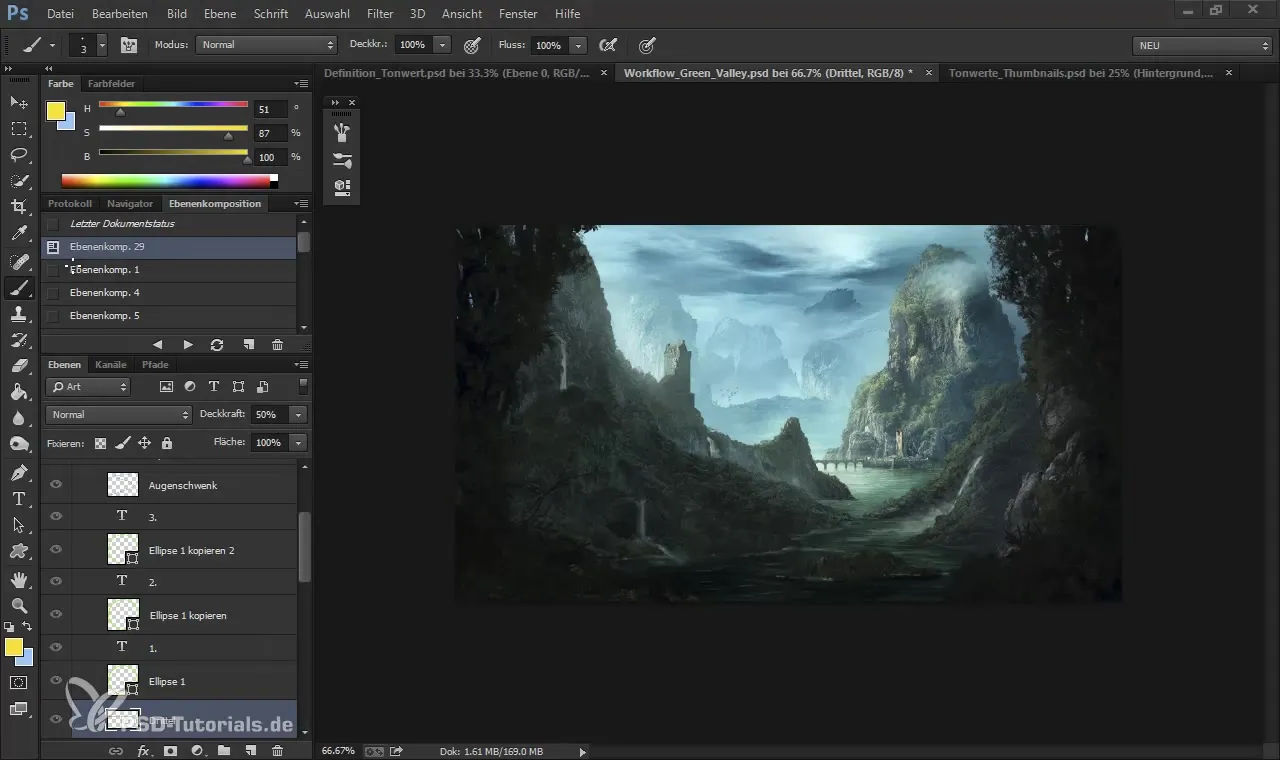
2. Create a Value Study
Start your image with a value study that shows the basic light and shadow relationships. Focus on representing the depth and volume of your objects. Here you can already work in some initial details while still having the flexibility to make adjustments.
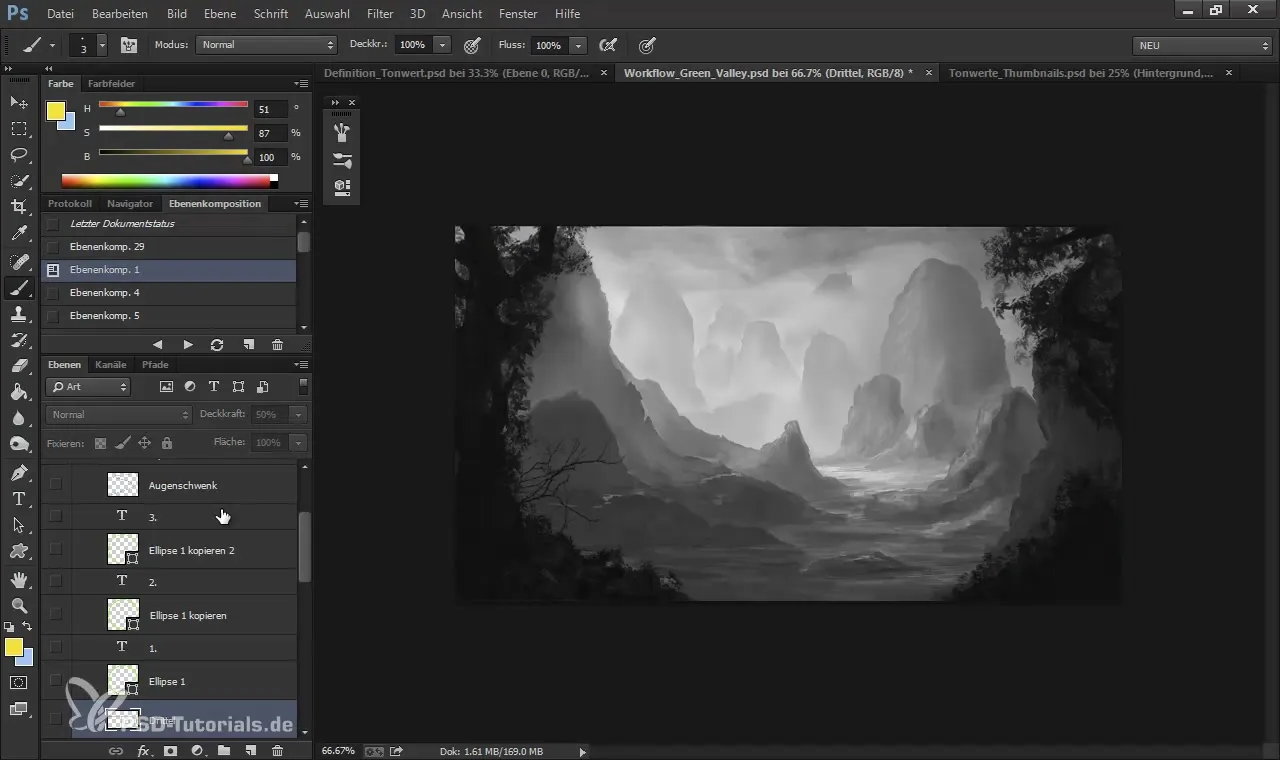
3. Color the Image
Add colors to your artwork without altering the values too much. Continue working on separate layers to make texturing easier. This method helps you maintain clarity and allows for easy adjustments.
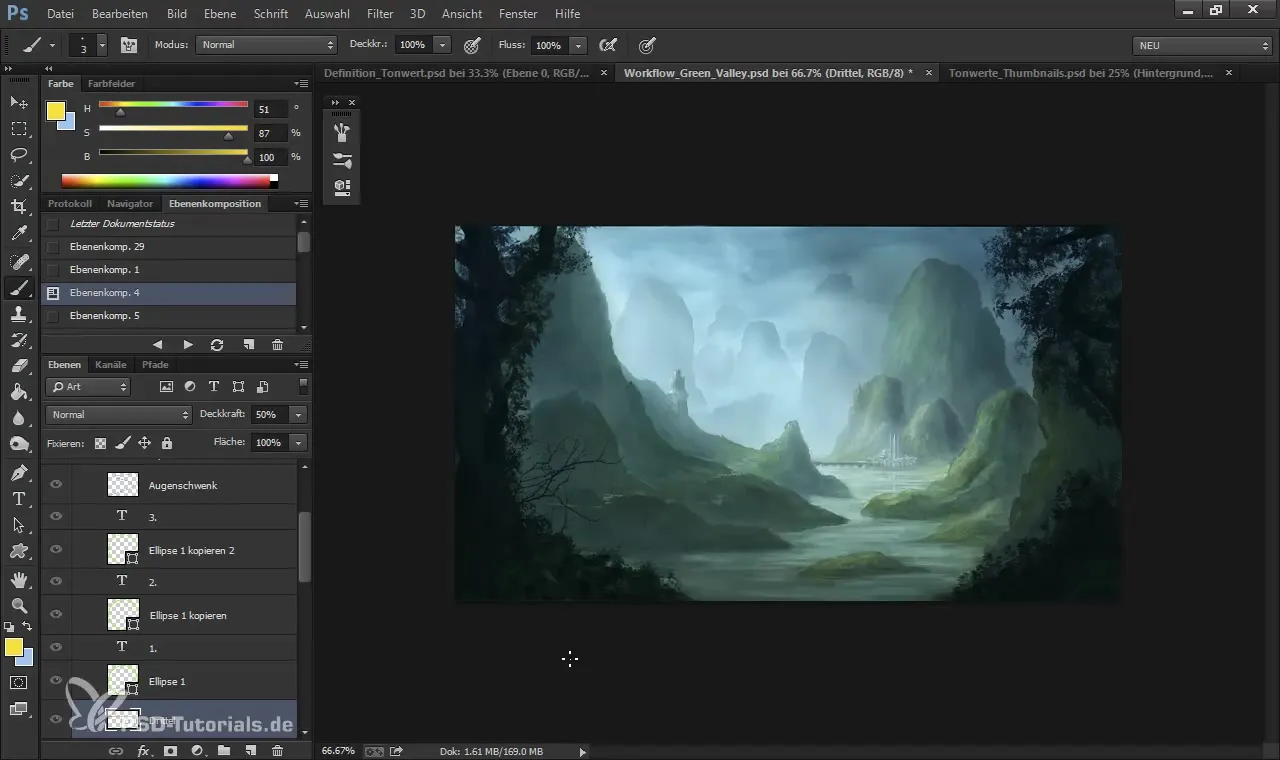
4. Add Texturing
Now start texturing your image. Ensure that the new textures are integrated harmoniously so that they fit both the lighting design and the previously defined values.
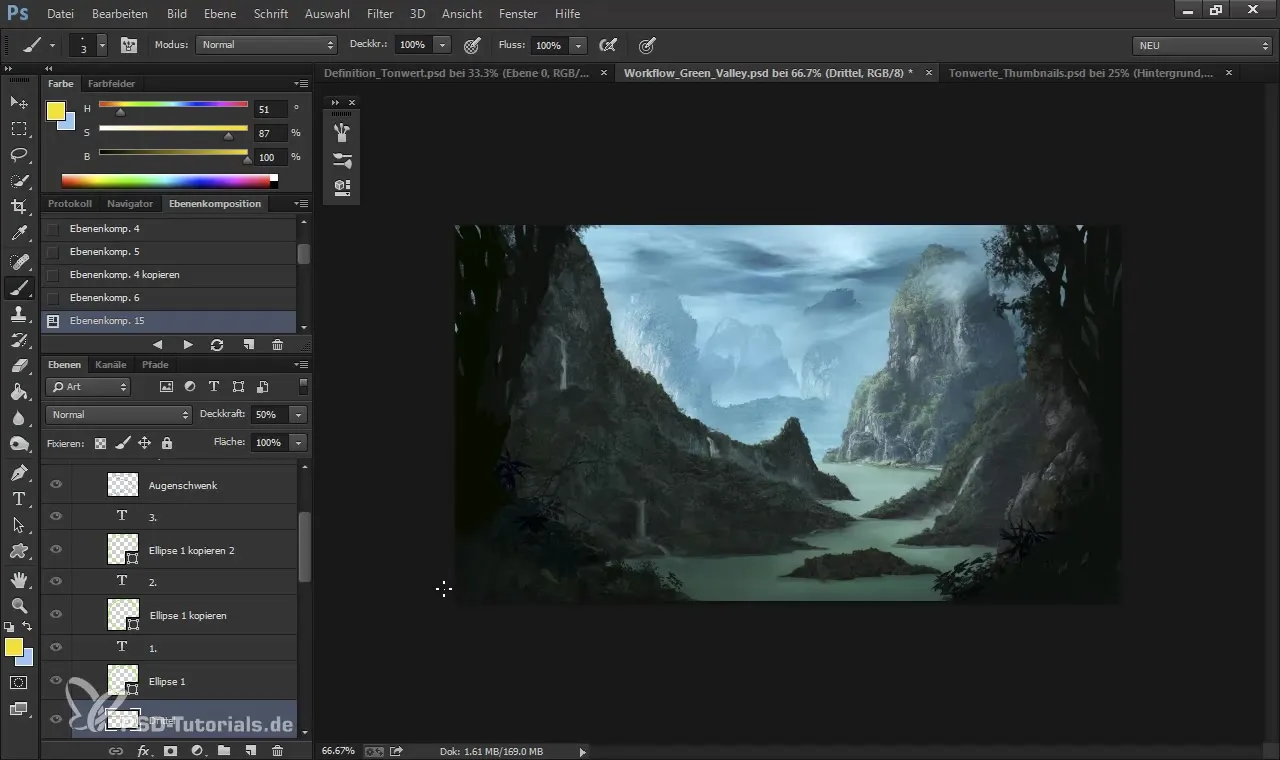
5. Plan and Define the Composition
An effective composition requires understanding foreground, midground, and background. Ensure that the different layers work in harmony and tell a common story.
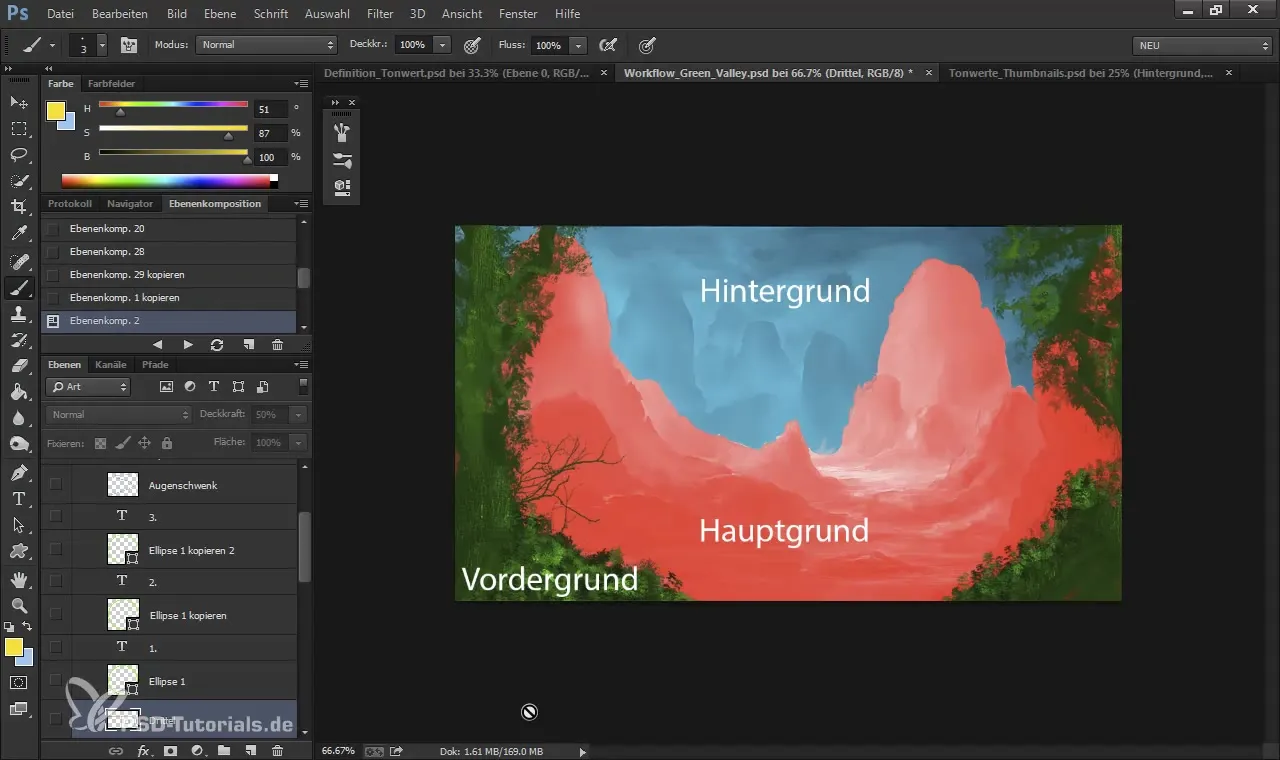
6. Apply the Rule of Thirds
Divide your image into thirds, both horizontally and vertically. Place important elements at the intersections or along these lines. This effectively directs the viewer's gaze and creates a balanced visual impression.
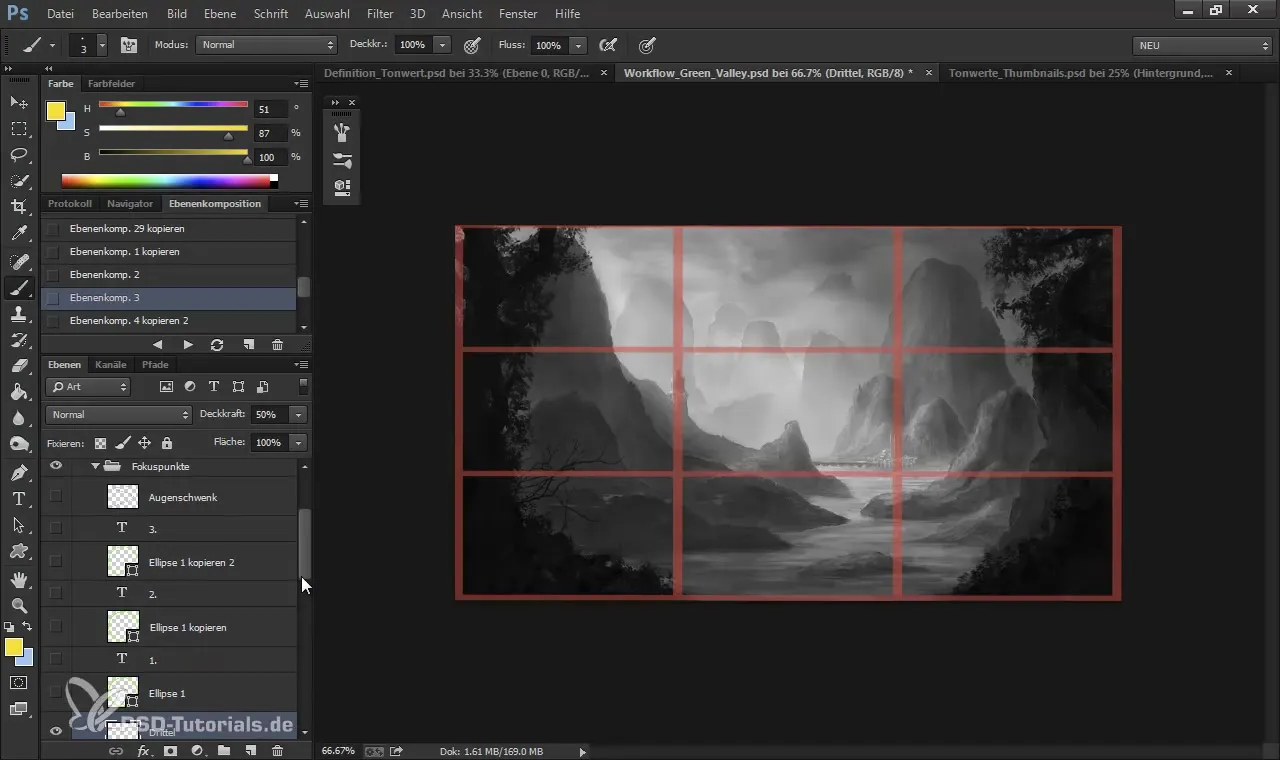
7. Establish Focal Points
Identify at least three focal points in your image. These points help guide the viewer's attention. Consider the movements in the image so that the viewer's gaze is led from one point to the next.
8. Movement and Narrative
Use elements such as rivers or paths to create a visual movement within the image. These lead the viewer's gaze smoothly through the different focal points and enhance the readability of the image.
9. Ensure Harmony and Balance
Ensure that all elements of your image work together harmoniously. Use light and shadow to create contrasts and highlight certain areas. This can be achieved by creatively using colors and brightness contrasts.
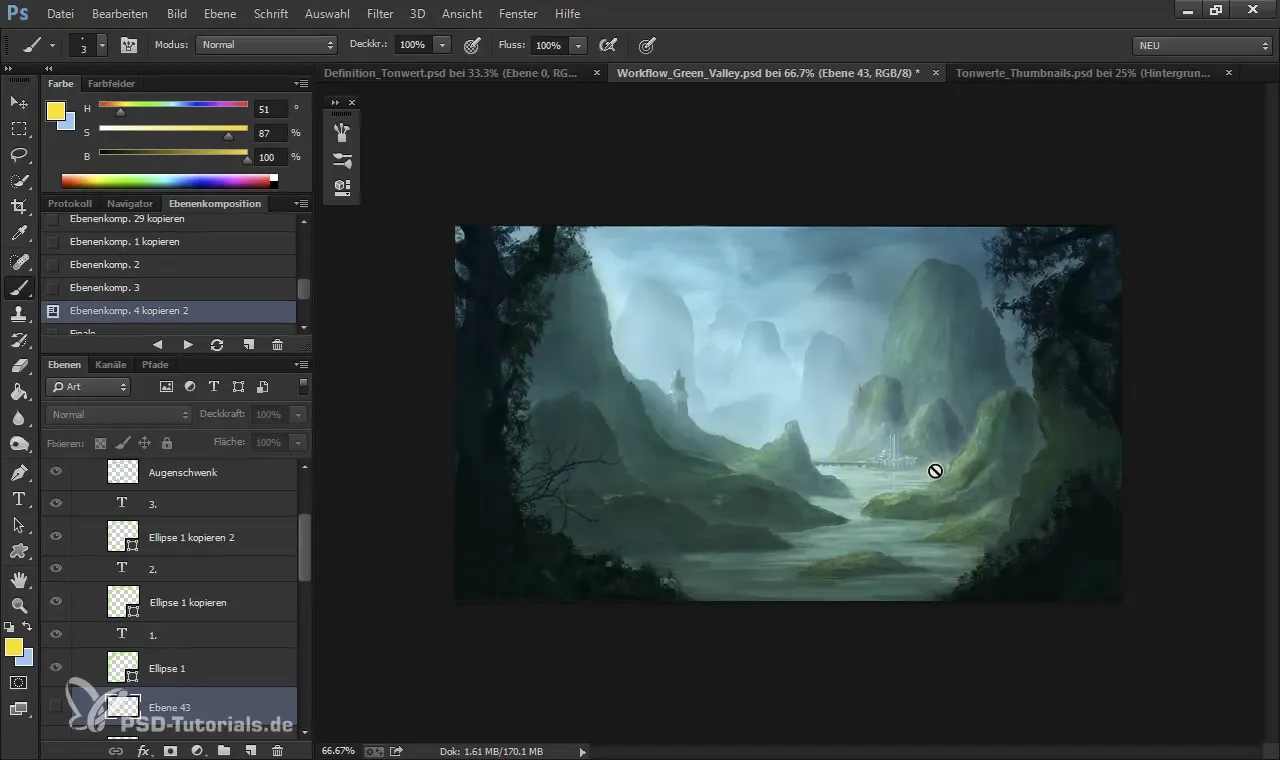
10. Finalize the Image
Take your time for the final revision by adding the smallest details and ensuring that the image tells a clear story. Avoid overcrowded content; simplicity can often achieve more impact.
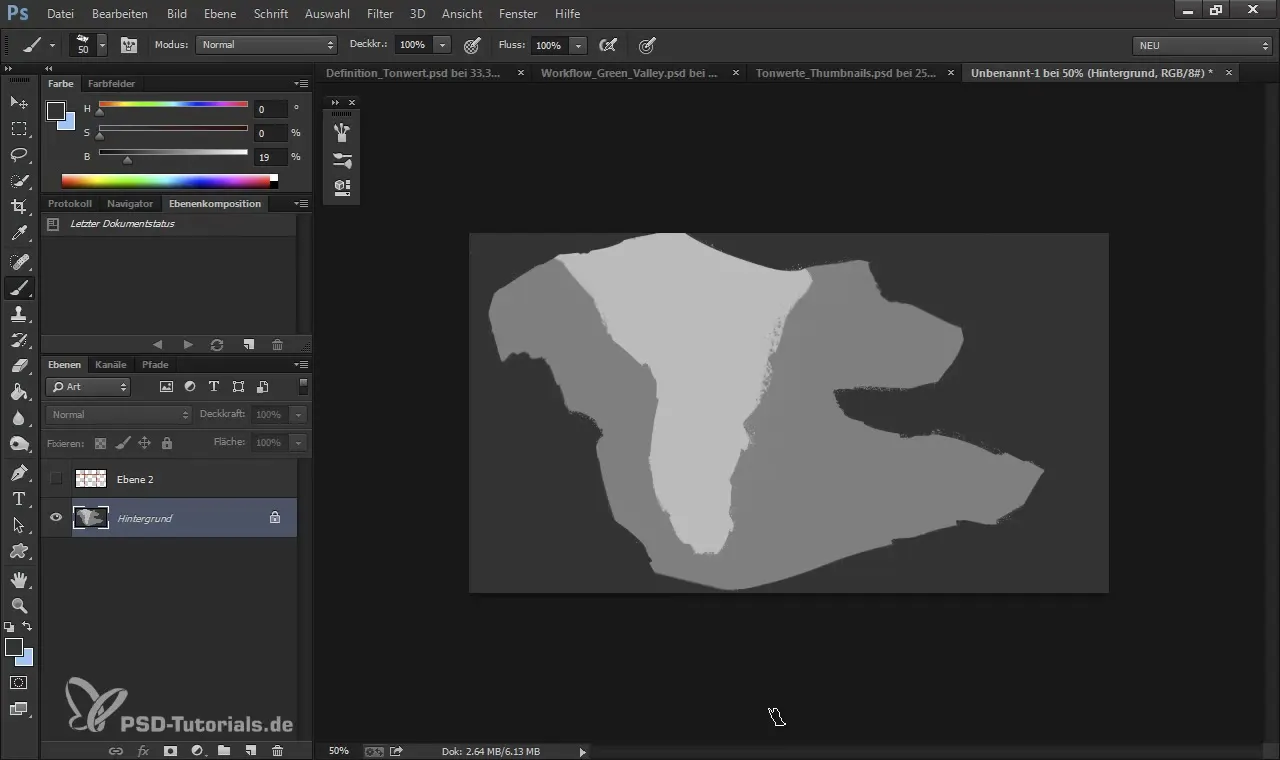
Summary - Understanding Composition in Digital Painting & Matte Painting
The key points such as the application of values, a thoughtful composition, and the strategic placement of focal points are crucial to the success of your digital artworks. By applying these principles, you can contribute to improving your compositions and create engaging images that stay in the viewer's memory.
Frequently Asked Questions
How important is composition?A thoughtful composition is crucial for the perception and readability of the image.
What is the rule of thirds?The rule of thirds is a composition method where the image is divided into thirds to place interesting elements.
What effect do focal points have?Focal points help guide the viewer's attention and create a visual hierarchy in the image.
What role do colors play in composition?Colors influence the mood and emotional reactions of the viewer, so they should be used intentionally.
Why is using different layers important?Working with multiple layers makes editing and adjusting your artwork easier without messing up the entire composition.
